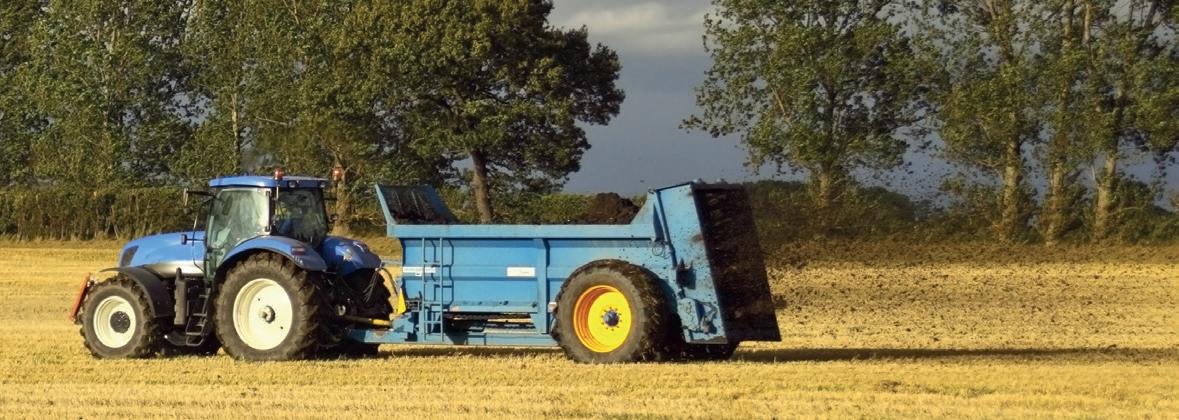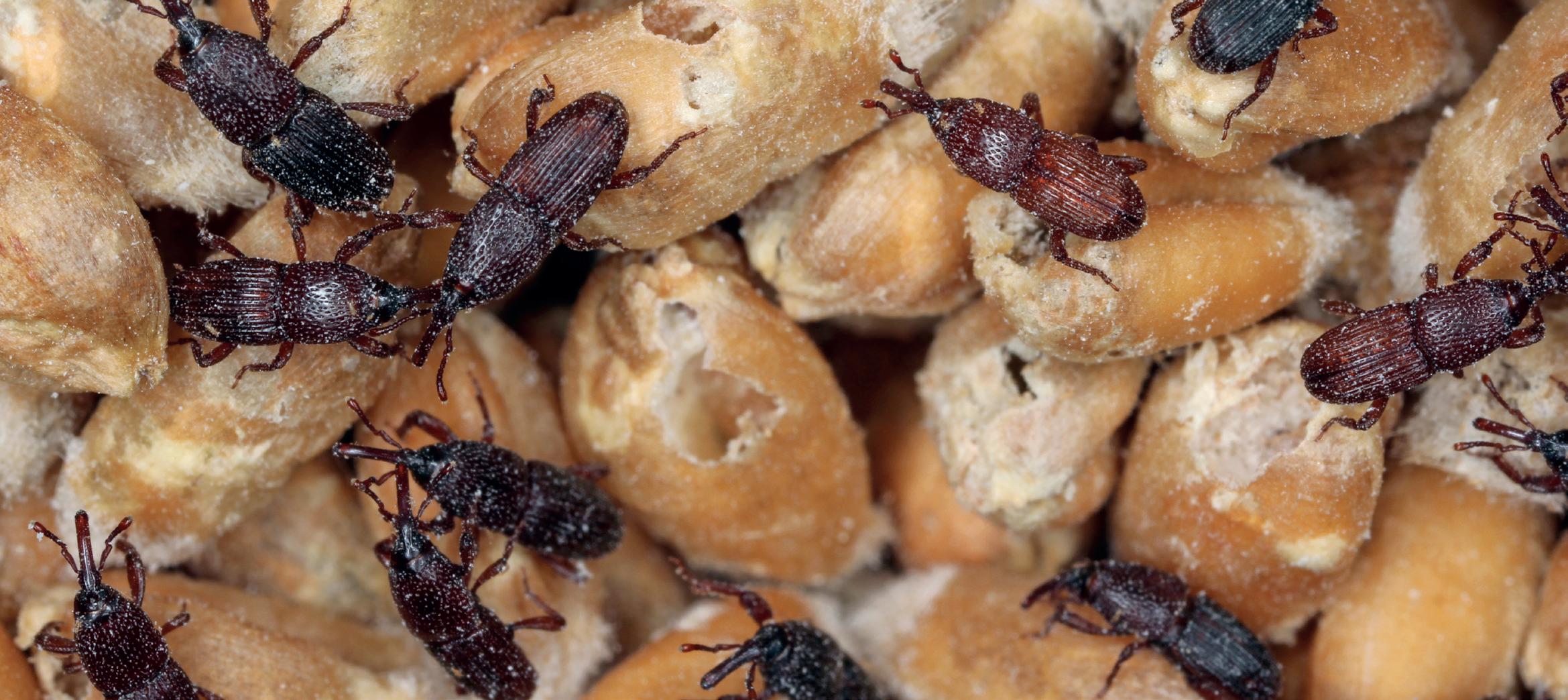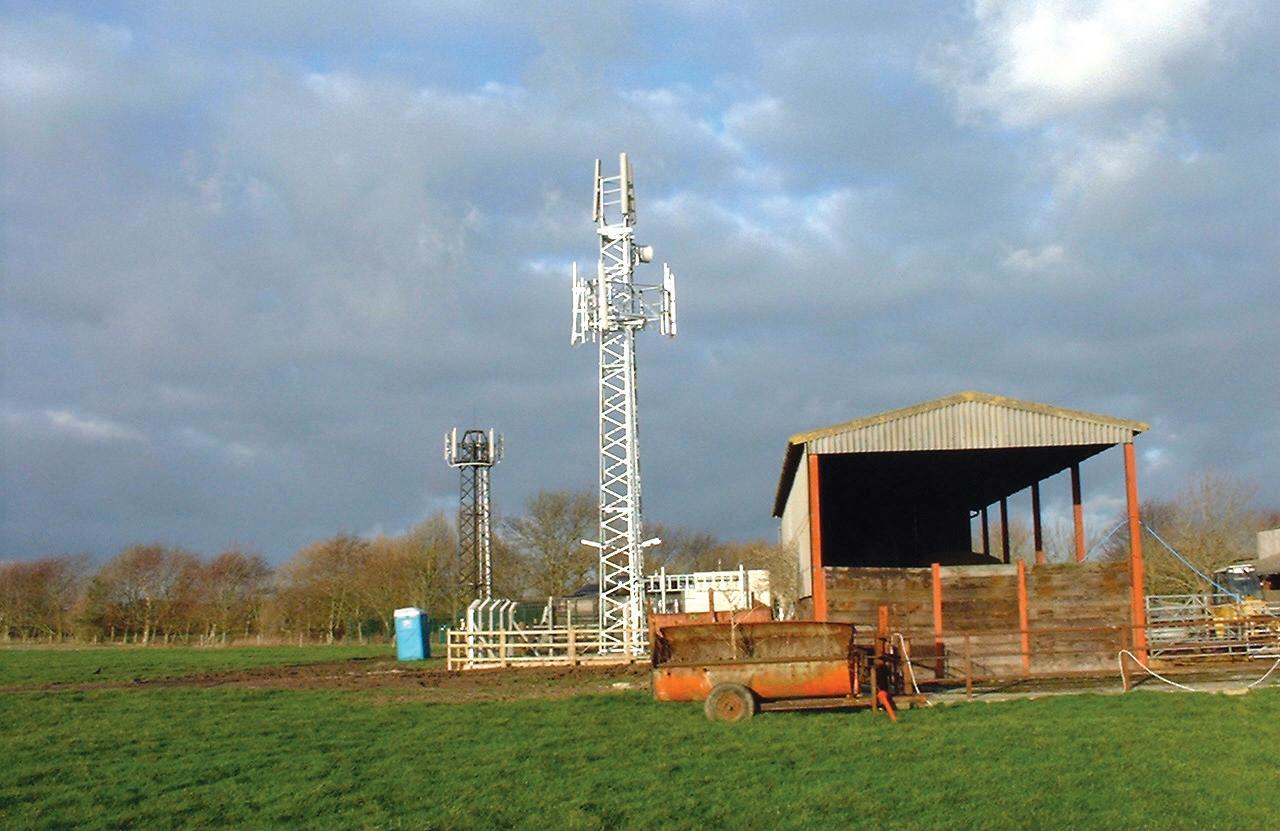
10 minute read
Lambing done, now where is the grass?
STEPHEN CARR MITIGATING DROUGHTS
t

My rain gauge for March measured less than half an inch. April looks like being drier still. Are droughts in the South East of England going to become more common and, if so, what can arable farmers in our region do to mitigate their impact?
The obvious strategy to avoid the worst eff ects of dry springs and summers is to sow a big proportion of crops in the autumn. Winter crops get their root systems established before the spring, while spring crops, where the top few inches of soil very often have to be moved more than once to achieve a satisfactory tilth, lose vital soil moisture to evaporation.
The problem with moving entirely to autumn sown crops, of course, is that the options have become so limited. Winter crops require more pesticides to protect them through the longer growing season, but the array of permitted herbicides and insecticides has become ever more restricted by environmental regulators, so our ability to protect our crops has gradually been eroded.
Blackgrass has therefore become ever more diffi cult to control, making the growing of continuous winter wheat much less common. But even as farmers have switched into crop rotations and away from wheat monoculture, the most popular break crop – oilseed rape – has become threatened like never before from a whole range of insect pests that can’t be dealt with so effi ciently due to the ban on neo-nicotinoid insecticides.
Min-till certainly off ers some solutions to these problems. The promise of improved soil structure and the reduction in moisture loss through less cultivation are potentially great advantages. But min-till is not a silver bullet solution to the adverse eff ects of drought.
If the crop is to be drilled into a shallow cultivated layer of soil, germination and establishment can be problematic – particularly if surface trash harbours pests like slugs.
Looking at my crops this spring I have not yet moved into panic mode. An open autumn gave me an opportunity to sow everything under ideal conditions and, as it happens, (apart from the acre of potatoes I grow for the kitchen of our pub) all my crops for this current season have been in the ground since October.
But even if my winter crops do stand up to the worst eff ects of another spring and then summer drought, as an arable farmer I still face an increasingly hazardous livelihood in terms of future harvests as the climate changes.
Then again, if increasing temperatures and lack of moisture do reduce the reliability of my future harvests, all is not lost. Lighter harvests produce better farm gate prices. So, even as I have been writing this, my computer screen has just fl ashed a message sent from my farming co-operative: “New crop values reach record highs on drought concerns – phone the offi ce for prices”.
Even a lack of clouds has a silver lining.


STEPHEN CARR
Arable farmer
KPS ARE THE LEADING COMPOST PRODUCERS IN SUSSEX
Our composts are manufactured to British Standards.
·Ideal for improving soil structure whilst adding nutrients and balancing water control · Suitable for arable, orchard, vineyard, greenhouse, allotment and garden · We have various grades available · Both bulk and small orders welcome

AN ESTABLISHED FAMILY BUSINESS, FOR OVER 35 YEARS CALL US ON 01444 831 010
EMAIL COMPOSTING@KPS.UK.COM WEBSITE KPS.UK.COM

FRESH CHALLENGES FOR LATE FUNGICIDE PLANNING
Further changes to yellow rust populations, combined with wide variations in drilling date and more limited chemistry, add extra complexity to fungicide planning this spring. Hutchinsons’ Technical Development Director Dr David Ellerton offers advice for the flag leaf.
Septoria remains the primary disease of winter wheat in most seasons, and with a large proportion of crops sown relatively early last autumn, there could be a higher risk this spring.
But while drilling date is an important factor in determining disease risk, rainfall during April and May are key to Septoria infection, so even latersown crops could come under higher pressure if conditions are conducive.
Depending on conditions over the coming days and weeks, we could well be in a high pressure situation for yellow rust and Septoria by T2, so a robust, well-timed fungicide will be vital to protect the top two leaves, which contribute approximately two-thirds of final yield.
PROTECTING YIELDS
The dominance of yellow rust in 2019/20 is clearly reflected in yield responses from five Hutchinsons trials, where the largest fungicide benefits were in more susceptible varieties, including KWS Kerrin, KWS Kinetic, Skyfall and KWS Zyatt.
Normally, Septoria-susceptible varieties like KWS Barrel top the yield response chart, however last
KEY POINTS
• Early-sown crops are likely to be at higher Septoria risk • Beware of new rust races overcoming varietal resistance • Use variety scores and drilling date as a guide when planning treatments • Vary chemistry and modes of action for curative and protectant activity and resistance management.
DR DAVID ELLERTON
Hutchinsons
T: 07973 400908 E: david.ellerton@hlhltd.co.uk Canterbury: 01227 830064
www.hlhltd.co.uk
year’s uplift was around one-third of the usual level.
Across all varieties and all fungicide timings, the average response over untreated of 1.66 t/ha was below 2018/19, reflecting the dry conditions but hiding significant variations between varieties, particularly where yellow rust came in.
Close crop monitoring is therefore vital in the run up to the flag leaf spray. Use factors such as drilling date and variety disease ratings as a guide when planning spray programmes, prioritising crops with a score of six or less. But stay flexible and be prepared to react to conditions as they unfold.
T2 OPTIONS
Triazoles still form the backbone of flag leaf sprays, but programmes should include actives with different modes of action, for anti-resistance and to give curative plus protectant disease control.
SDHI-based products are likely to be essential in most wheat flag leaf sprays given the importance of Septoria, particularly in more curative situations where triazoles may struggle due to the sensitivity shifts seen over the past decade.
Losing chlorothalonil and epoxiconazole has reduced fungicide options this year, but there are still many effective actives and promising products in the pipeline.
Epoxiconazole will be particularly missed for yellow rust control, however tebuconazole is still very effective against yellow and brown rust, while prothioconazole offers reasonable yellow rust activity.
Prothioconazole or metconazole are also suitable for low to moderate Septoria. The former can give good activity on low to moderate mildew, too, but if mildew is well established, a specific mildewicide such as cyflufenamid may be needed.
Mefentifluconazole (Revysol) is extremely strong against Septoria and offers good rust control.
SDHI options include fluxapyroxad, bixafen or fluopyram. Benzovindiflupyr is also excellent against rusts.
Where appropriate, including the protectant multisite folpet can improve Septoria control in high-risk situations and help as part of an antiresistance strategy.
PEST PROTECTION SECURE YOUR GRAIN STORE
Protect against losses caused by grain store pests with Lodi’s Phobi Smoke Pro 90C+
Between 2019 and 2020, the UK’s wheat yield fell by 37.5%. But as prices keep rising, with a sharp rise in grain price at the start of the month, it is more important than ever to protect your crops in store. Worldwide, up to 60% of grain can be lost during storage but this can be as low as 1% with the right store and a good pre-harvest and post-harvest routine. As well as poor growth in the fi eld, unfavourable harvest conditions and inadequate drying together with grain store pests can be a source of grain loss.
Insect damage to stored crops is a curse that many arable farmers know all too well. The cost of grain rejection due to pest damage can be up to £50/tonne. Grain store insect pests are separated into primary, which infect the undamaged grains, and secondary, which feed on damaged grains and dust. The most common and damaging pest is the Grain Weevil (Sitophilus granaries), a primary pest. They are seen across the UK and continue to spread through infected grains and grain vehicles. Within its nine month lifespan, a female can lay 200 eggs, each of which bores into the centre of a grain. The most common secondary pest is the Saw Toothed Grain Beetle (Oryzaephilus surinamensis). The larvae of this beetle feed on the broken kernels left behind by primary pests such as the grain weevil. Both the Grain Weevil and the Saw Toothed Grain Beetle are hardy and can survive in the cracks and crevices of the grain store over winter.
The ideal grain store should be clean, dry, well-ventilated, rodentproof and watertight. The fi rst step to ensure safe and eff ective longterm storage is to make sure that the store is clean. Cleaning of the grain store should take place as early as possible – around six weeks before intake. This guarantees that there is enough time to fi x any problems that you might fi nd during your inspection. There’s nothing worse than fi nding out that your roof has a leak when the grain is inside and now needs treating! It is especially important to focus on the hard-to-reach areas such as the roof, handling equipment and under the fl oor. Pests can be present even in seemingly empty stores, as grain or grain dust from the previous harvest can provide a food source. It might be benefi cial to use an industrial vacuum cleaner or high-pressure airline to ensure that the store is as clean as possible. Spray the fabric of the building with K-Obiol EC or another grain protectant which will help to control any grain store pests that may be present. Once the inside of the building is covered, we recommend using a smoke disinfectant, such as Lodi’s Phobi Smoke Pro 90C+. Smoke insecticides help to target the nooks, crannies and hard to reach areas of the grain store where the spray can’t reach, including machinery and equipment. The smoke forms part of a successful treatment plan for full and targeted control of all grain store pests. Phobi Smoke Pro 90C+ is simple to use and 100% eff ective against a wide range of pests, including Grain Weevils & Saw-Toothed Grain Beetles. Simply light the wick and leave the smoke to work its way through the entire building. Each tin contains enough product to cover 600 cubic metres. If the grain store is over 600m3, use more smoke generators until you have the correct coverage. This can be done any time in between cleaning and the inlet.
It’s so important to get the disinfection right to ensure that your store is ready for your grain. Here are our tips for the best practise for using smoke insecticides: • Before you start to fumigate, make sure you have shut and sealed any doors and drawn any shutters apart from the exit. • Shake all the generators to loosen the powder inside. • Place the generators on a fully heatproof surface. • If you are using multiple smoke generators, make sure you light the generator furthest away from the exit fi rst and work towards the exit. You also need to make sure that all of your tins of Phobi Smoke
Pro 90C+ are prepped and ready before you light the fi rst one. • Leave the store sealed overnight for the best result and then open the doors to air it for a few hours.

Lodi hosted a webinar on Grain Store Pest Protection which is now available on their website.
The webinar has been awarded two CPD points from BASIS. Ken from Bayer CropScience gave a talk on Grain Store Hygiene and Mark from Command Pest Control presented on Pest Control Best Practices. There was also a Q&A where Ken and Mark were joined by farmer Tom to answer farmers’ questions about grain store pests. Visit the Lodi UK website for more information and to watch it – www.lodi-uk.com
If you would like more information on the Phobi Smoke Pro 90C+ or the webinar:
E: contact@lodi-uk.com
www.lodi-uk.com











